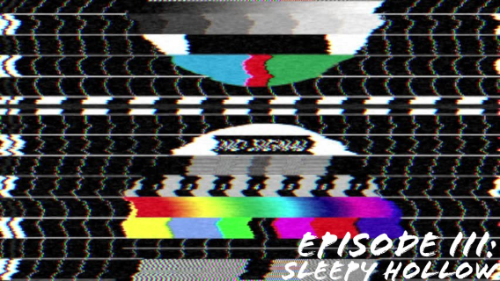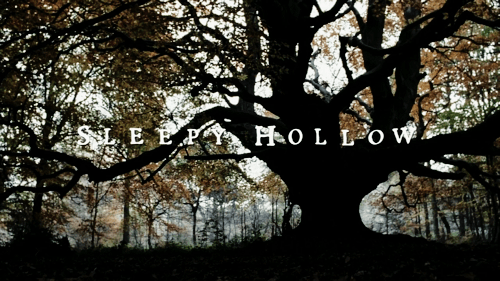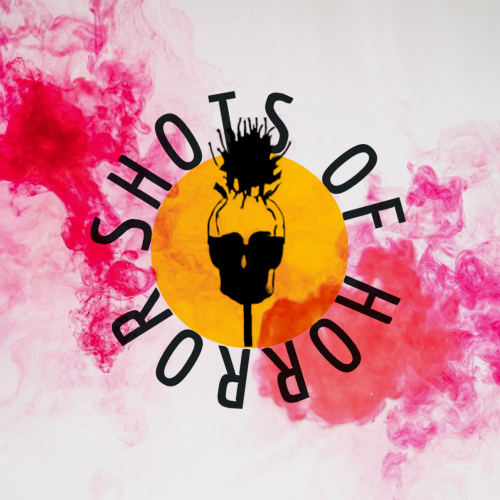
Title: Sleepy Hollow
Year: 1999
Dir.: Tim Burton
Producer: Scott Rudin, Adam Schroeder, Francis Ford Coppola
Writer(s): Washington Irving (short story “The Legend of Sleepy Hollow”), Kevin Yagher, Andrew Kevin Walker
Company: Paramount Pictures
Starring: Johnny Depp, Christina Ricci, Miranda Richardson, Casper Van Dien, Michael Gambon, Christopher Walken, Jeffrey Jones, Richard Griffiths, Ian McDiarmid

Gothic.
High Gothic.
The special effects on the Horseman when he gets his head.
This looks bleak as hell. Why am I just now noticing how bleak the atmosphere is? Appropriate though.
These are the many, many thoughts and notes that I had while watching 1999’s Sleepy Hollow, directed by Tim Burton for the first time in a very long time.
 To start this movie off, I really did have a good time watching this. It’s the right amount of occasional comedy to break up the horror and seriousness tone of the film whether it’s the special effects of the faces of the witch in the woods or when the Headless Horseman gets his head back and there’s the eyes and facial expressions to whenever Depp’s character faints or even pauses when blood is in his sight. On top of that, the town’s atmosphere, the costumes, the lighting, this impending doom that is just lingering around is what makes Burton’s films quite unique.
To start this movie off, I really did have a good time watching this. It’s the right amount of occasional comedy to break up the horror and seriousness tone of the film whether it’s the special effects of the faces of the witch in the woods or when the Headless Horseman gets his head back and there’s the eyes and facial expressions to whenever Depp’s character faints or even pauses when blood is in his sight. On top of that, the town’s atmosphere, the costumes, the lighting, this impending doom that is just lingering around is what makes Burton’s films quite unique.
 But in my opinion, his uniqueness is really centered around the fact that he is truly an artist. I knew he had done a lot of sketches and artwork for his films and they ALL have this really cool Gothic vibes. I found a very cool article through Wired.com which showcased a lot of his artwork and to see how they are later interpreted into his films is amazing. He has a style that when it is on film, it brings you into this fantasy world where it’s realistic but not overdone. It’s rare to have directors who have their own way of filming or stylized filming and the visuals. You know a Tim Burton film when you see it, whether you know the film or not. And that’s what I commend him for. He hasn’t changed his style all that much and why should he? It’s gotten him very, very far into his career and he has a staple on film making and artistry.
But in my opinion, his uniqueness is really centered around the fact that he is truly an artist. I knew he had done a lot of sketches and artwork for his films and they ALL have this really cool Gothic vibes. I found a very cool article through Wired.com which showcased a lot of his artwork and to see how they are later interpreted into his films is amazing. He has a style that when it is on film, it brings you into this fantasy world where it’s realistic but not overdone. It’s rare to have directors who have their own way of filming or stylized filming and the visuals. You know a Tim Burton film when you see it, whether you know the film or not. And that’s what I commend him for. He hasn’t changed his style all that much and why should he? It’s gotten him very, very far into his career and he has a staple on film making and artistry.
*Upper right: Romeo & Juliet, 1981-1984; Burton during Disney Apprenticeship.
**On a side note, I got immediately distracted thinking of other Burton projects and for some reason, James and the Giant Peach came into my head because I was thinking of “style” but I remembered that the director for that (Henry Selick) also did The Nightmare Before Christmas and Coraline. Thanks to Google for reminding me that Burton did produce James and the Giant Peach which explained everything.
Back to Burton and Sleepy Hollow.
 In the vhs tape I have of the film (I have a extensive collection of horror films on vhs), there were two different behind the scenes look of how they created the visual style, costumes and it was impressive. It’s great to get an insight into how movies are made and the different techniques used. For example, when the horseman needed more higher running scenes with the horse, they used a classic Hollywood trope of a mechanical, galloping horse that they covered and designed a horse on top of it, used tubes to create nasal smoke and if you have time, I’d highly recommend watching a behind the scenes video or clip.
In the vhs tape I have of the film (I have a extensive collection of horror films on vhs), there were two different behind the scenes look of how they created the visual style, costumes and it was impressive. It’s great to get an insight into how movies are made and the different techniques used. For example, when the horseman needed more higher running scenes with the horse, they used a classic Hollywood trope of a mechanical, galloping horse that they covered and designed a horse on top of it, used tubes to create nasal smoke and if you have time, I’d highly recommend watching a behind the scenes video or clip.
Now I’m glancing through my notes and I have written a lot, some are just random words or phrases or thoughts, some are actual interpretations of what I saw and I won’t go through them all but here are some immediate highlights.
- 17th or 18th Century (New York City, 1799) guess
- Cool tones, muted, looks as if the movie could be a black/white or grey film.
- Warm colors occasional; red (blood, red glass cross in church), yellow and orange or delicate colors like pinks and soft tones.
- Corn field made me think of Children in the Corn
- Katrina’s dress at the end of the film is a clear nod to Beetlejuice
- Using the same exiting scene/angle of the Horseman and the “Tree of the Dead”
- Gothic art… religious art…. Italian renaissance… when was the Italian renaissance?
- Religious vs science vs witchcraft/occult
- The church is white = pure, innocence, Holy ground, the horseman can’t enter
- What is the significance of the red cardinal?
- There’s a lot of references to “eye”; the eye in the Van Garrett crest, the eye Katrina draws in the chalk
- Iconography
The notes are incredibly scattered and it’s obvious art history, religious art and occult imagery is what I kept coming back to whether the film was intentional with it or not (most likely they were). “Icons” or Iconography is “the images or symbols found in pictorial and sculptural art works as well as the study of subject matter”. This is heavy in Byzantine/Christian art.
 The movie has its moments of Crane using science to emphasize his reasoning, the town of Sleepy Hollow knows of the supernatural is active; there’s uses of witchcraft and then on top of that, the church is at the center of it all. The church (or basic religion) is deemed as this sacred ground, this Holy ground that the horseman cannot cross or enter because it is work of darkness or really witchcraft. Every small detail that seems insignificant or ignored from a first watch has some bigger meaning or connection to the overall plot or to the characters.
The movie has its moments of Crane using science to emphasize his reasoning, the town of Sleepy Hollow knows of the supernatural is active; there’s uses of witchcraft and then on top of that, the church is at the center of it all. The church (or basic religion) is deemed as this sacred ground, this Holy ground that the horseman cannot cross or enter because it is work of darkness or really witchcraft. Every small detail that seems insignificant or ignored from a first watch has some bigger meaning or connection to the overall plot or to the characters.
One thing that I will comment on briefly is the cinematography of the film. There are some truly amazing shots found throughout that captures the essence of the film and the style of Burton. When combined with the lighting or use of costumes or colors, there’s a magical, fantasized aura around the movie. Think of Beetlejuice or Edward Scissorhands, Big Fish, Sweeney Todd, or even Batman, there’s this world that you step in that is grounded in reality but everything has this enchantment attached to it. And like mentioned above, it goes right back to Burton being an artist.
Other examples of his artwork:
*Upper left: Original Horseman artwork by Tim Burton. Edward, 1990. Blue Girl with Wine Glass, 1997.
He already has a distinct eye and style in his artwork that is enhanced through film or media interpretation. Sleepy Hollow is a great example of taking both worlds that already exist together and combining them to where its one big world.
 I realized why I enjoyed this movie more than I originally did. It’s the fact that it’s an artist who gets to work behind the camera and use his abilities and talent to make a movie but not lose who he is or what makes him special (or her if we’re talking about women). It’s less about the film making process for me and more about the artistic abilities present. Since that is what I went to school for, got a degree in, went to art school for multiple classes and eventually get certified into Museum Studies, that’s my world, the artistic, expressing yourself world. I know nothing of film making except I know it can/will be difficult and if you can find a way to take what you already know and incorporate it into film, that’s even more talent.
I realized why I enjoyed this movie more than I originally did. It’s the fact that it’s an artist who gets to work behind the camera and use his abilities and talent to make a movie but not lose who he is or what makes him special (or her if we’re talking about women). It’s less about the film making process for me and more about the artistic abilities present. Since that is what I went to school for, got a degree in, went to art school for multiple classes and eventually get certified into Museum Studies, that’s my world, the artistic, expressing yourself world. I know nothing of film making except I know it can/will be difficult and if you can find a way to take what you already know and incorporate it into film, that’s even more talent.
In conclusion, Sleepy Hollow is a fun movie that has fantasy and horror elements combined with references or inspirations from art. The cinematography aspect is really cool and artistic on its own merit and there’s a lot going for it; costume design, set design, special effects that are used when a person cannot do it or something can’t occur naturally. There are cover ups and conspiracies, romance, betrayal, anything you can think of in a trashy romance novel. And it still holds up to today’s standards minus some random, wonky special effects every once in a while.
Check out Sleepy Hollow if you can. I don’t think you’ll regret it.








Great blog I enjoyyed reading
LikeLike